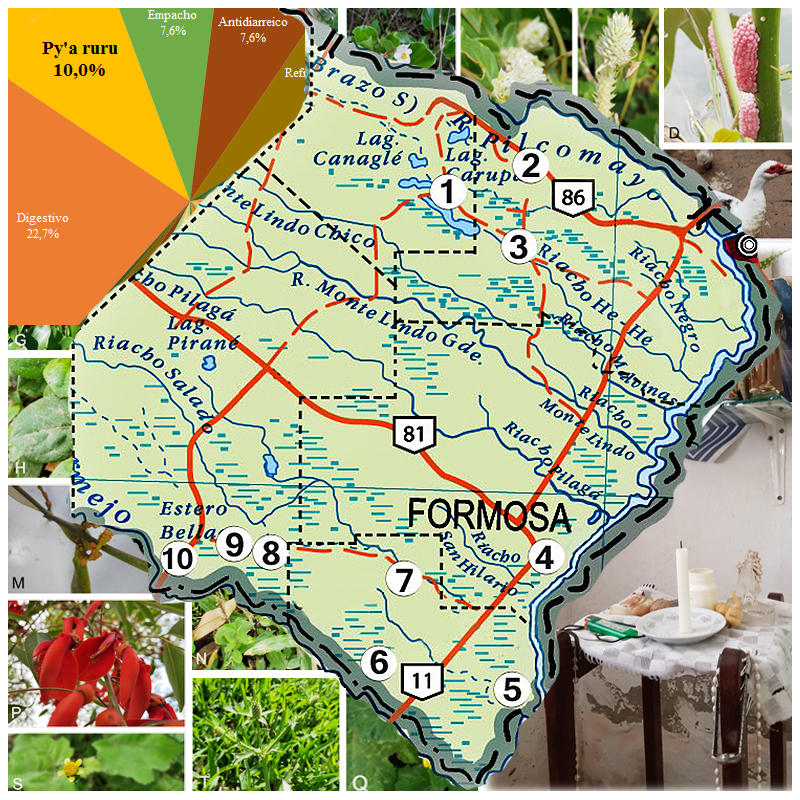“The py'a ruru is in Guaraní and hepatitis is in Spanish”. Cold plants, dry plants and other remedies in the medical ethnobotany of the Criollos of Formosan Humid Chaco
DOI:
https://doi.org/10.31055/1851.2372.v57.n3.37717Keywords:
etiology, humoral theory, local ethnomedicine, medicinal plantsAbstract
Background and aims: This article approaches the medical ethnobotany of the Criollos of the east of the province of Formosa (Argentina) from the description and study of a particular typical pathology of their ethnomedicine named py'a ruru as a local name for hepatitis or stomach swelling (its etiology, therapeutics and the plants involved in its treatment). These rural and peri-urban populations wiht Hispanic-Guarani roots, live in the Chaco Húmedo region and in their medicine and ethnobotany classificatory were observed notions related to the Hippocratic-Galenic theory, as occurs in the medicines and ethnobotany of other human groups of the country and of America.
M&M: Ethnobotanical information was collected through semi-structured interviews. Plant material was collected in the forest and also plant samples were acquired in a market.
Results: The etiology and therapeutics of py'a ruru are exhaustively described and analyzed. The 21 vegetal species used in its therapeutics are detailed. 10 of them are classified as "fresh remedies" and 7 of them as "drying remedies". Furthermore, these species imply 21 medical ethnobotanical data.
Conclusions: The continuities and discontinuities of warm-fresh and dry-humid notions typical of the local Criollos in their medical ethnobotany and ethnomedicine, together with the 21 plant species used in the treatment of the disease described, allow us to glimpse the wealth of knowledge that are used in domestic and specialists medicine in the east of the province of Formosa.

Downloads
Published
Issue
Section
License
Copyright (c) 2022 Leonardo Anconatani

This work is licensed under a Creative Commons Attribution-NonCommercial-NoDerivatives 4.0 International License.
Provides immediate and free OPEN ACCESS to its content under the principle of making research freely available to the public, which fosters a greater exchange of global knowledge, allowing authors to maintain their copyright without restrictions.
Material published in Bol. Soc. Argent. Bot. is distributed under a Creative Commons Attribution-NonCommercial-ShareAlike 4.0 International license.




